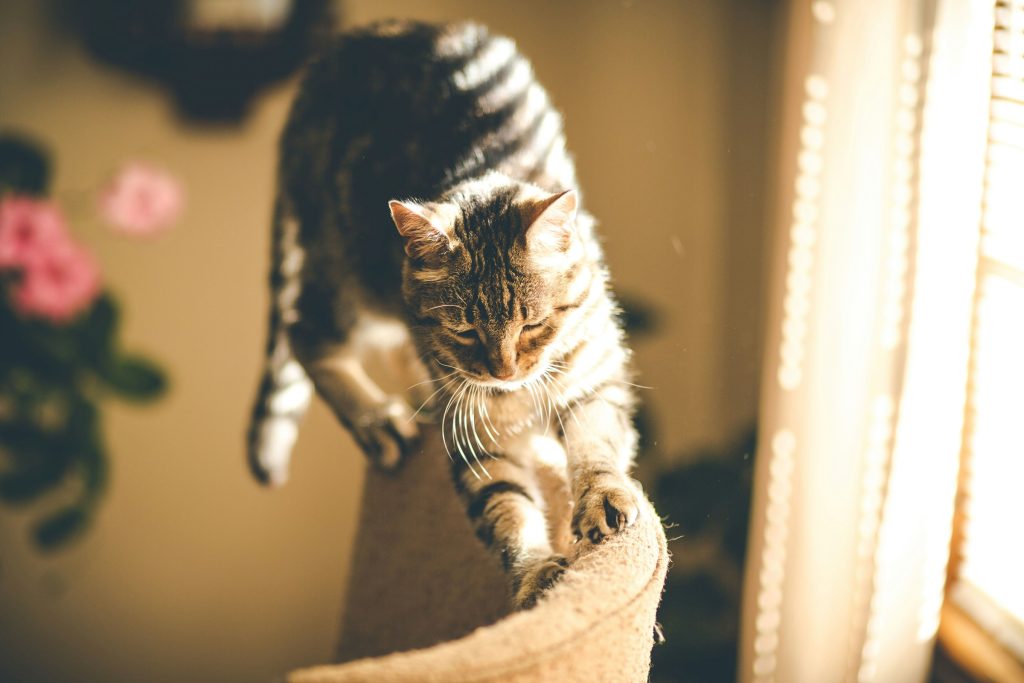
6 Gentle Ways to Stop Your Cat from Scratching Furniture (Without Yelling)
Tired of shredded couches, clawed chair legs, or scratch marks on your doors? You're not alone. Cats scratch as a natural instinct — but that doesn’t mean your furniture has to suffer. This guide will show you 6 gentle, effective ways to stop your cat from scratching furniture without yelling, punishing, or damaging your bond.
1. Offer Scratch-Friendly Alternatives (And Make Them Irresistible)
The first step to stop your cat from scratching furniture is to give them something better to scratch. Invest in several types of scratchers — vertical posts, flat pads, angled boards — and place them near the spots your cat already scratches. Sprinkle catnip, use silvervine, or rub a little kibble on the surface to make the post more appealing than your armchair.
2. Block Access to Favorite Furniture Targets
If your cat always targets a specific couch corner, try covering it with double-sided furniture-safe tape, a temporary throw blanket, or aluminum foil. These surfaces are unpleasant to scratch — and often enough to break the habit. Some cats respond well to citrus spray deterrents, too.
3. Use Positive Reinforcement and Redirection
Cats don’t respond well to punishment — but they do respond to rewards. Catch your cat scratching a post? Praise them and offer a treat. Catch them mid-scratch on the couch? Gently redirect them to a nearby scratcher. This process, done consistently, teaches them what “good scratching” looks like.
4. Trim Claws Regularly (Or Use Soft Nail Caps)
Keeping your cat’s claws trimmed reduces the damage they can do — and makes scratching less satisfying. Trim every 2–3 weeks using cat-safe clippers. For extra protection, consider soft vinyl nail caps that fit over the claws. They're safe, humane, and last about a month with proper application.
5. Enrich Their Environment with Daily Play
Sometimes cats scratch out of boredom or frustration. A well-stimulated cat scratches less destructively. Use wand toys, puzzle feeders, and climbing furniture to give your cat a healthy outlet for their energy. The team at Fear Free Happy Homes emphasizes that mental stimulation is just as important as physical space.
6. Rule Out Medical or Stress-Related Causes
If your cat suddenly starts scratching more — or in new places — it may be a sign of anxiety or even a health issue. Schedule a checkup to rule out skin irritation or pain. Also, consider recent changes: new furniture, guests, or schedule shifts can all lead to stress scratching. VCA's cat wellness guide offers great insight into what to watch for.
Learning how to stop your cat from scratching furniture is about understanding — not punishment. With consistency, patience, and the right tools, your cat can learn to scratch in all the right places while your home stays beautifully intact.
Helpful resources:
🔗 Cat Enrichment Tips – Fear Free Happy Homes
🔗 Preventive Care for Cats – VCA
Frequently Asked Questions
Why does my cat keep scratching the couch even with a scratcher nearby?
Your cat may not like the scratcher's texture or position. Try placing it directly next to the scratched area and adding catnip to entice use. Some trial and error is normal.
Are declawing surgeries still recommended?
No. Declawing is strongly discouraged by veterinarians and animal welfare groups. It’s a painful amputation that can lead to lifelong issues. Humane alternatives like trimming and redirection are far better options.
What materials are best for cat scratching posts?
Sisal rope and cardboard are popular textures. Some cats prefer carpet or wood. Offering a mix of materials increases the chance your cat will use the scratcher consistently.
Will soft nail caps hurt my cat?
Not if applied properly. Nail caps are lightweight, safe, and painless — but they must be sized and glued carefully. Ask a groomer or vet to show you the first time.
Can I train an older cat to stop scratching furniture?
Yes. Older cats can absolutely learn new habits with consistent redirection and positive reinforcement. It may take a bit longer, but gentle repetition works at any age.

Join the Busy Pet Parent Newsletter!
Get easy routines, time-saving tips, and the latest gear reviews—delivered straight to your inbox.
Perfect for busy pet owners, apartment dwellers, and anyone who wants a happy, healthy companion (without the stress).
Exclusive guides & checklists
Product recommendations & deals
No spam—unsubscribe anytime!




